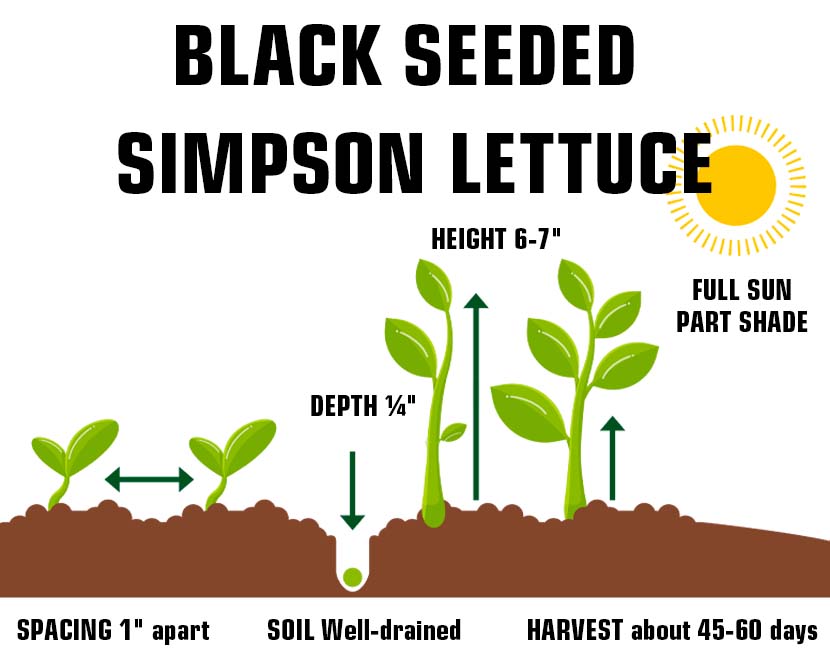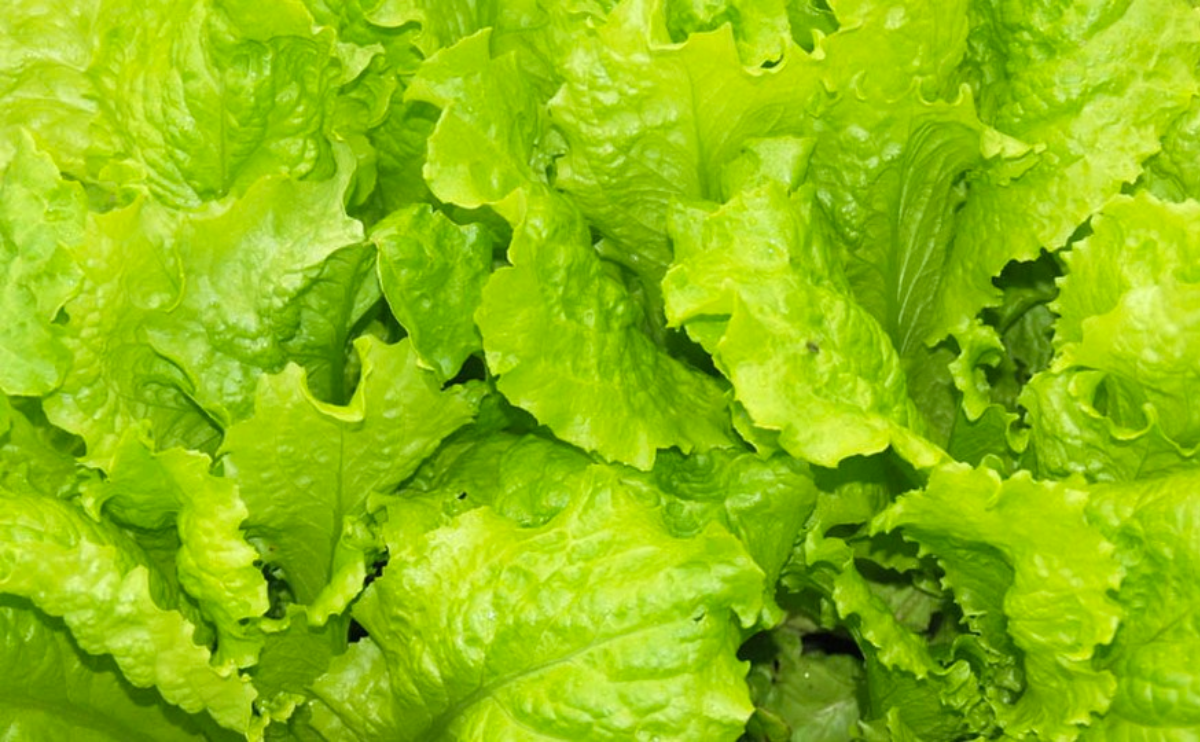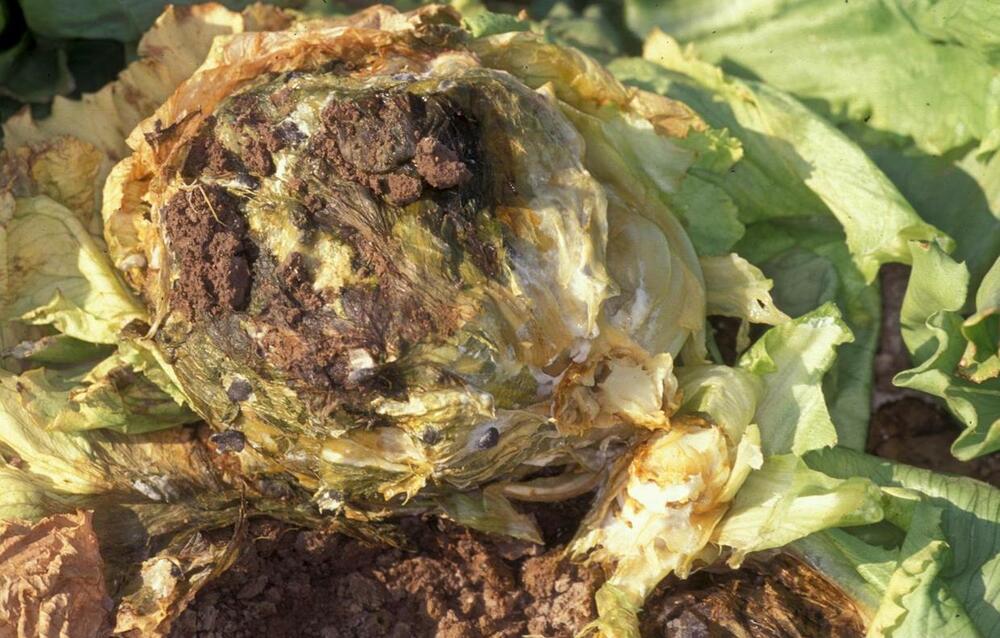The lettuce Black Seeded Simpson, a cut-and-come-again type, is a fast growing lettuce that does not form a crop. The leaves are yellow-green and they have a beautiful, somewhat ribbed leaf structure. Black Seeded Simpson has the shape of a cone and after harvesting new leaves will be formed in the middle of the plant. It is no problem to increase sowing distance or plant them; in that case the leaves will be a little bit bigger and firmer. In order to keep the tenderness it is recommended to harvest regularly. Finally, the plants will bolter and this will be the right time for new sowing.

| Common Name | Lettuce, garden lettuce |
| Botanical Name | Lactuca sativa |
| Family | Asteraceae |
| Plant Type | Annual, vegetable |
| Size | 6–12 in. tall and wide |
| Sun Exposure | Full sun, partial sun |
| Soil Type | Loamy, rich, well-drained |
| Soil pH | Acidic, neutral (6 to 7) |
| Bloom Time | Seasonal |
| Hardiness Zones | 2a–11b (USDA) |
| Native Area | Mediterranean |

When to Plant?
This will be determined by your planting zone. There is a final frost date for each area. As a result, you can plan your gardening activities around this date. Check our Frost Dates Across North America: First & Last Frost Dates Chart. However, the date will not be the same for every plant.
How to Plant
Lettuce grows best in full sun, though excessive heat can cause plants to bolt to seed, or leaves to wilt. For an early start, seeds can be started in flats 4 weeks prior to the last frost and transplanted outdoors in mid to late spring. If growing in summer, select a partially shaded location, or one that receives primarily eastward exposure to mitigate the potentially damaging effects of excessive heat upon lettuce.
Growing lettuce in a container is a good option to help protect it from pests. You also can keep the container in a convenient spot for harvesting. Make sure to check the space requirements for your particular lettuce variety. In general, a container that’s six to 12 inches across should suffice. Make sure it has drainage holes. Unglazed clay is an ideal container material, as it will allow excess soil moisture to escape through its walls.

How to Cultivate
Whether you’re planting in containers or in the ground, make sure the seeds are only lightly covered in soil. Keep the soil evenly moist but not soggy as the seeds germinate, which should take around seven to 10 days. The soil temperature should be at least 40 degrees Fahrenheit and ideally between 55 and 65 degrees Fahrenheit.
How to Harvest
The best time of day to harvest is in the morning when the lettuce is still plump and the sun hasn’t caused it to wilt at all. You can harvest cut-and-come-again lettuce types as soon as the outer leaves reach about 6 inches long. Trim off these outer leaves, leaving the inner leaves to continue to mature. If you are growing head lettuce, be sure to harvest before the head starts to elongate. That means it’s ready to bolt, and the flavor will suffer. It can be stored in the refrigerator in a plastic bag for up to 10 days.
Hydroponics
Germination: To germinate Black Seeded Simpson lettuce hydroponically, soak the seeds in water for 12-24 hours. Then, fill a tray with a hydroponic growing medium and place the seeds on the surface, spacing them evenly apart. Cover the tray with plastic wrap to create a humid environment and keep it in a warm, well-lit area. Mist the seeds with water as needed and remove the wrap once they have sprouted.
pH range: Black Seeded Simpson lettuce grows best in a pH range of 6.0-7.0. It’s important to regularly monitor and adjust the pH level of the nutrient solution to ensure optimal growth.
EC and PPM: The EC (electrical conductivity) and PPM (parts per million) levels of the nutrient solution should be maintained between 1.2-1.6 mS/cm and 800-1200 PPM respectively for Black Seeded Simpson lettuce.
Humidity: Black Seeded Simpson lettuce prefers a moderate to high humidity level of around 60-70%. To maintain this level, you can use a humidifier or regularly mist the plants with water.
Light hours: Black Seeded Simpson lettuce requires around 12-16 hours of light per day for optimal growth. LED grow lights are a popular choice for hydroponic setups as they provide the right spectrum of light and can be adjusted to provide the necessary amount of light.
Temperature air: The ideal air temperature range for Black Seeded Simpson lettuce is between 60-70°F (15-21°C). Avoid exposing the plants to extreme temperature fluctuations or drafts, as this can damage the leaves and slow down growth.
Temperature water: the water temperature for Black Seeded Simpson lettuce should be maintained between 65-75°F (18-24°C). To keep the nutrient solution at the right temperature, you can use a water heater or a chiller depending on the ambient temperature of the growing area.
Overall, growing Black Seeded Simpson lettuce hydroponically can be a rewarding experience, and following these guidelines can help you grow healthy and vibrant plants.




